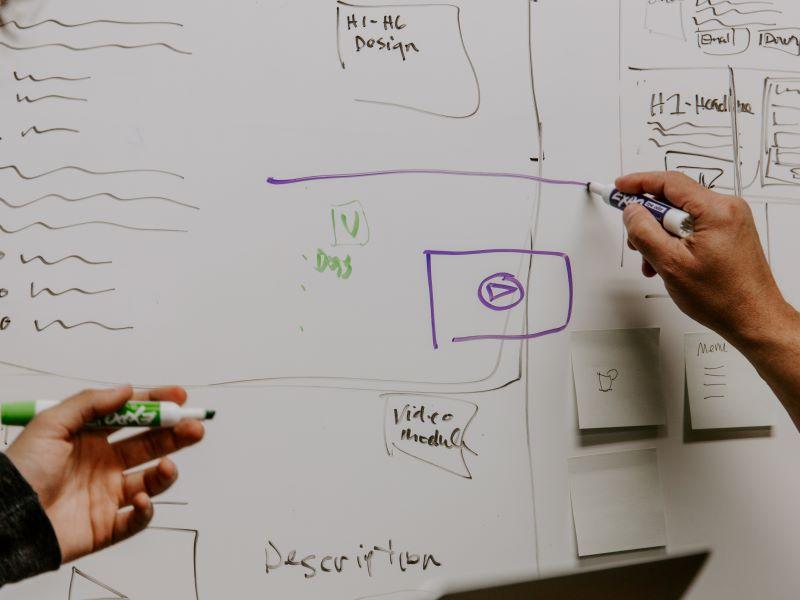Using the same case studies in your class repeatedly can get boring after a while. Students will probably miss out on a lot of the cutting-edge developments in the industry. How can educators refresh their materials to keep students in line with breakthrough knowledge?
Our team decided to trial a student-as-partners initiative in an engineering undergraduate programme, as part of our institution’s partnership with the University of Glasgow.
- Try a ‘not by the book’ teaching approach for student-centred, industry-focused learning
- Authentic assessment for inclusivity and employability
- How industry partnerships and digital credentials can close the skills gap
Three senior students were invited to craft authentic assessments for junior students to work on in class. These seniors had just completed an eight-month integrated work-study programme in separate engineering companies and returned to finish their final year. Using their experience in the workplace and understanding of earlier modules taken, the senior students blended academic and industrial currency to collaborate with faculty to create authentic assessments. The aim was for them to be instructive, realistic and achievable for the junior students, and to open their minds to industry practices.
By students, for students
Why were students selected to draft new authentic assessments? We believe that their perspective of being a student fresh out of workplace learning gives particular insight into how case studies are approached in the industry, constrained by a different set of practical conditions from that of a teacher!
The senior students also understand why junior students need to learn certain topics as a foundation and can help them hone basic capabilities, and introduce how the industry values them. Senior students can spot common challenges during their time as juniors and help point out gaps in the curriculum, using their workplace experience.
We gave the senior students several guidelines to follow during the creation of new authentic assessments:
- Authentic assessment characteristics must be present: the assessments need to be based on a real-life engineering problem with no singular solution and must require additional research to solve
- Impart the skills and mindset needed to simulate and analyse a scenario: junior students should practise the processes step-by-step and understand the intention behind conducting a simulation
- Espouse the best practices of the engineering industry: cover how companies operating in Singapore approach engineering simulation now
- Workforce preparation: what junior students should expect in the engineering simulation-based industry, as well as to ease the school-to-work transition
With these guidelines in mind, the senior students created three authentic assessment case studies that were applied and relevant, in collaboration with faculty. The senior students would also guide their juniors in class and answer questions regarding industry practices.
How did it go? We noticed an increase in engagement with the three students-as-partners authentic assessments. This led to two unexpected results. The first was an improvement in the transfer of learning. Because authentic assessments need a variety of perspectives and extra information to solve, students took content from previous modules and applied them to solve the new problem, transferring their learning from one context to another.
We also saw development in junior students’ knowledge, skills and attitudes. They were more proactive when seeking information from senior students and gained confidence in their attempts of the assessments.
So, what’s in it for the senior students? As it turned out, they enjoyed crafting authentic assessments and guiding their juniors. Creating case study materials also helped the senior students reinforce their learning. They deepened their technical understanding when taking work experience and distilling it into a digestible, approachable format for junior students.
It also improved the senior students’ recollection when they revisited past content, aiding in their transfer of learning.
Finally, they took ownership of the guidance and learning process, increased their engagement and practised teaching assistantship and communication skills.
How do we move on from here? We believe that there are several ways to further integrate students-as-partners case studies into education. How do they differ from faculty-created or industry-created ones, and what opportunities does that difference provide? The learning objectives and outcomes of both students-as-partners and traditional assessments should be appreciated and practised.
Novelty aside, the long-term effects of these assessments would need to be measured, especially in terms of improving the transfer of students’ learning ability or the knowledge, skills and attitudes gained.
Ultimately, students-as-partners authentic assessments are designed to complement existing case studies used in classroom discussions or as graded assignments. With new information, technologies and techniques appearing all around us, having these assessments as a resource in an educator’s toolbox allows junior students early exposure to the industry.
Jamil Jasin is a research assistant at the SIT Teaching and Learning Academy, and Alfred Cheng Hock Tan is an associate professor in the Engineering Cluster, both at the Singapore Institute of Technology. Idris Li Hong Lim is an associate professor at the National University of Singapore, and Christian Della is an assistant professor at the University of Glasgow.
If you would like advice and insight from academics and university staff delivered direct to your inbox each week, sign up for the Campus newsletter.




comment